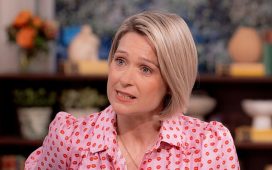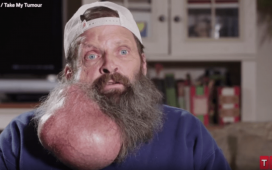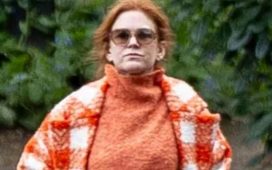By the mid-Eighties, the powers that be at DC Comics felt that their fictional multiverse had become too complicated for its own good. Characters like Superman, Batman, and Wonder Woman all existed on parallel Earths, in multiple iterations. The multiverse, DC decided, had to become a single universe, with only one of each hero and villain. The result: Crisis on Infinite Earths, a 12-issue limited series (written by Marv Wolfman and drawn by George Perez) featuring virtually every notable DC character to date, from every world and every era. Crisis and Marvel’s contemporaneous Secret Wars kicked off a tradition of annual line-wide crossovers at both of the major comics companies. Somehow, though, Crisis made the DC universe even harder to follow, and eventually many of its parallel Earths returned.
The TV version of Crisis on Infinite Earths — a five-part crossover uniting all of the CW’s shows based on DC characters, beginning Sunday night with Supergirl — has a simpler mandate behind it.
“We want to do it because it’s cool,” says Marc Guggenheim, who co-created Arrow and helps orchestrate the periodic crossovers between that show, The Flash, Legends of Tomorrow, Batwoman, et al. He told the creative teams of all the CW shows (including Black Lightning, whose title character will participate even though Crisis isn’t making an episode for it) to consider Crisis “a magic ticket” that would allow them to make whatever changes, big or small, to their continuity, in the same way that Superman and Wonder Woman got new origin stories and altered supporting casts in the wake of the original comic book Crisis.
For years, Guggenheim had assumed that Crisis was the kind of massive story that would be left to DC’s film division. But while working on last year’s TV crossover, Elseworlds, Arrow-verse boss Greg Berlanti was told that it was available for the taking. “That,” Guggenheim says, “was all that we needed to hear.”
Parallel worlds had long been a part of these series. The Flash traveled to “Earth-2” in its second season, while Supergirl (which began life as a CBS show not meant to interact with the CW series) has always taken place on a separate Earth from the one where Oliver Queen and Barry Allen (that’s Green Arrow and Flash, to the uninitiated) have their adventures. The 2017 crossover Crisis on Earth-X leaned into the concept, while also introducing Guggenheim to the idea of “the agnostic crossover.” In previous years, they had attempted to treat each installment as an episode of its respective series; so, the Arrow chapter of 2016’s Invasion! spent as much time celebrating that show’s 100th episode as it did continuing the alien invasion story. Crisis on Earth-X was presented as a miniseries under that name, and major events for individual characters — like Oliver and Barry wedding longtime loves Felicity and Iris — didn’t happen within their own shows.
That’s the approach being taken with Crisis on Infinite Earths, though it creates complications down the line. The Crisis on Earth-X double wedding, for instance, occurred in what was technically an episode of Legends of Tomorrow, so a Flash or Arrow viewer bingeing one of those series months or years later would miss a huge moment for the title character. Without spoiling the Crisis on Infinite Earths premiere (the only installment that I’ve seen), something huge happens to someone who is a regular on a non-Supergirl show. It’s a conundrum Guggenheim has made peace with.
“I’ve always been of the philosophy that the bingeing cart can’t drag the broadcast horse,” he says. “These things are conceived and produced for the CW. I leave it up to Warner Bros. Home Video to figure out how they live on past their broadcast date.” He acknowledges that this philosophy is “not ideal,” citing as an example the fact that only four of the five Crisis series are carried in Britain (Batwoman is the odd show out). “If I controlled Hollywood,” Guggenheim says, “we would cut together all five hours into a single, big movie that would live on in Blu-ray. But I’ve been told repeatedly that that isn’t going to happen.”

Ruby Rose as Batwoman and Melissa Benoist as Supergirl. Photo by Dean Buscher/The CW.
Having produced many crossovers since The Flash spun off from Arrow back in 2014, Guggenheim has picked up tricks for making the logistical nightmare work. For starters, these events are made as part of the normal production cycles of their respective shows. So, as Guggenheim puts it, “How do you get [Arrow star] Stephen Amell to be on two sets at once?” (Making matters more complicated is that only Flash and Arrow share the same production facility, so it’s not as easy as just walking over to another part of the backlot.) He and the assistant directors from the various series sit down in Vancouver with color-coded schedules (red for Flash, blue for Supergirl, etc.) that they then cut into strips and try to assemble into something workable.
Over the years, they’ve also learned to take shortcuts where necessary. Flash’s arrival in one of the first crossovers was scheduled to be filmed on a day when actor Grant Gustin wasn’t available. Guggenheim realized the character’s face would really only be visible for a single shot, so they used a double to depict Barry running into the scene, then later used digital effects to place Gustin there.
Black Lightning, meanwhile, not only takes place on another parallel Earth, but films thousands of miles away from the other shows, in Georgia. Guggenheim initially assumed that, at most, Black Lightning star Cress Williams might be able to shoot a brief cameo (which would be his first onscreen interaction with Amell, Gustin, and the others). But when Guggenheim called that show’s executive producer, Salim Akil, he says Akil told him, “‘If Black Lightning’s going to be a part of it, it has to be more than just a cameo. It has to be a meaningful appearance.’” Akil’s team helped clear Williams’ calendar, while playing the same role the producers on all the individual series do when their characters participate in a crossover, Guggenheim says: “Keeping us honest, doing dialogue passes, reviewing cuts, and making sure the version of Black Lightning that we were depicting was the correct version.”
In addition to finally integrating Black Lightning into the Arrow-verse, Guggenheim and company went all-out to bring in memorable stars from projects that predate those he and Berlanti have worked on. This includes actors from shows that were well-known (Tom Welling and Erica Durance from Smallville, Burt Ward from the iconic Sixties Batman) and less so (Ashley Scott reprising her role as the Huntress from the WB’s short-lived Birds of Prey). They even got Legends of Tomorrow‘s Brandon Routh to play Superman for the first time since 2006’s Superman Returns. (Between Routh, Welling, and Tyler Hoechlin — who has played the Man of Steel several times previously on Supergirl and in crossovers — this Crisis will not lack for Supermen.)
“We had to do it,” says Guggenheim. “When we pitched this to the studio and network, we said, ‘This is Crisis on Infinite Earths, not Crisis on CW Earths.’ We felt that to honor the original concept, we had to touch as many strands of the DC tapestry as possible.” Then, he adds, the question became which strands. “That was a very complex matrix. Some of them were pie-in-the-sky kind of ideas, some of them were educated guesses in terms of who we thought might want to participate. Every day was an emotional roller coaster: This person says yes, this person says no. Or, This person says yes, but we can’t afford them. There were certain characters who were approved by DC Entertainment, and then there were some where we were told absolutely not.”
Though Warner technically owns all these characters, it wasn’t as simple as Guggenheim and company pulling every toy they wanted off the shelf. They needed permission from their studio bosses, and from actors like Routh, who had spent the last few years playing the Atom, not Superman.
“There’s television, there’s theatrical, there’s the comic book side, and everyone has to agree,” Guggenheim says. “There’s a lot of email diplomacy that goes on. And then I had to have a creative conversation with Brandon, to see if this was something he was interested in doing. I didn’t have to twist Brandon’s arm. But I presented DC with a wish list of characters and concepts that we wanted to reference, [and] we worked it out. Certainly, this is the broadest we’ve gotten into the greater DC Universe.”
Accounting for all of these challenges, from actor availability to scheduling complications, “the story was always designed to be modular, to create maximum flexibility,” Guggenheim says. There were certain characters who were integral, he explains, while others would just be cameos, if they appeared at all. “We only put our chips down on those squares that we thought would pay off. There’s a scene with a character in hour three that was originally supposed to happen in hour two, and for a variety of reasons, it had to be moved. Fortunately, we had that flexibility.”

Brandon Routh as Superman. Photo by Katie Yu/The CW
Beyond the guest-star logistics — not to mention what Guggenheim calls the “budgetary aneurysm” that comes from moving regulars from show to show (“All the actors get paid a special crossover rate, which is higher than their regular episodic rate”) — there are more fundamental storytelling questions behind such an event. Though not every one of the dozens of characters to appear can get an arc of their own, he says, “it was very important that the five leads each had an emotional story that took you all the way from hour one to hour five.” This means a lot of interaction between Oliver and Barry, as the two heroes who formed the foundation of this multiverse, and also a fair amount between Supergirl and Batwoman, whose chemistry was a revelation to Guggenheim and the others when they briefly interacted during Elseworlds.
Arrow, meanwhile, is in the midst of an abbreviated final season that will run two episodes past the events of Crisis. The timing allowed Guggenheim to use this massive project to help conclude the story of the character who kicked off this corner of DC lore.
“It’s definitely changed my plans for what the series finale would be,” he says. “It’s opened up a possibility that is satisfying in a way I never anticipated. If not for doing Crisis on Infinite Earths, we wouldn’t have been able to do the series finale that we ultimately did.
“It feels appropriate” for Oliver’s adventures to end this way, he adds. “Arrow did start the Arrow-verse, and the Crisis on Infinite Earths event is designed to be the ultimate manifestation of that.”












